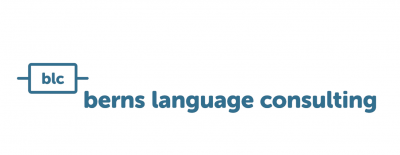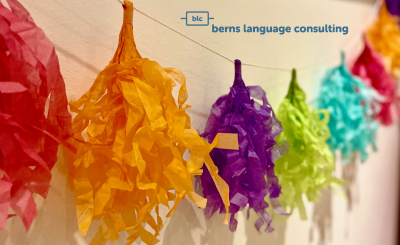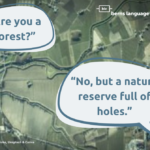“Anyone who does not know foreign languages knows nothing of his own.” – Johann Wolfgang von Goethe.
Appropriately for the World Day of Mother Languages on 21 February, Goethe particularly aptly formulated the relevance and relationship of mother tongue to foreign languages.
In particular, colloquial language reveals a lot about the history of a country, its peculiarities, its perspectives and its humor. In short, a country’s culture is expressed in its slang and shows the diversity and relationship of languages to each other (more below). To protect and promote linguistic diversity so that it is not lost. For this reason, UNESCO is dedicated to promoting languages as a sign of the cultural identity of speakers. Foreign language teaching and multilingualism lead to mutual understanding and respect.
And at blc this year we have prepared some colorful and diverse facts about language for you.
blc's facts about languages:
- Babalaas means having a hangover in South African. And here it is not meant that a person owns a male cat.
- Papua New Guinea is the country with the most languages. They are proud 856.
- Rotokas, a language from Papua New Guinea, has the shortest alphabet in the world with 11 letters
- The longest alphabet has Khmer (language from Cambodia), the speakers of this language have to learn 74 letters.
- World languages can lead to language minorities being suppressed or even forgotten.
- There are about 225 indigenous languages in Europe .
- Nahuatl (indigenous language of Mexico) has given a beautiful word to the Spanish, which is: Apapachar and means “embrace with the soul”.
- Our active vocabulary in the German language comprises about 12,000 – 16,000 words.
In total, however, the German language consists of around 5.3 million words. - Currently, approximately 7,139 languages are spoken worldwide.
These are all really interesting and fascinating facts and of course there are still countless other facts that unfortunately do not fit all in our blog. The fact is that languages have “door-opening” properties, they create bridges to other cultures and an understanding of otherness. That is why it is important that our linguistic diversity of 7,139 languages exists and survives.
The fascination of language
Language includes not only the actual words spoken, but also gestures, body language, speech rhythm and idiosyncrasies. What really constitutes a language often becomes clear only in cultural circles that are very different from one’s own. For example, in a Japanese conversation, the constant, affirmative “MH” must never be missing! While in German we are rather annoyed by a penetrating “yes … mh…. Mh… yes…”, the omission in Japanese means: “I don’t listen to you!”
Such characteristics are not the only fascination of a language. Because language is often used to identify the various influences. For example, history often strongly influences and changes the language of a country. The German language also changes over time. The German language also changes over time. For example, we havealso included some Yiddish termsand phrases in our colloquial language, and modern German is increasingly characterized by Anglicisms.
Although the changeability of language leads to fascinating studies and results, one thing must not be forgotten about the World Day of Mother Language: The transition of one language to another usually means the coexistence of two or more cultures, and in many cases this is not peaceful. Be it the colonial period in South Africa, which has brought in some European languages , or even the background of the World Day of Mother Languages, which was founded on 21 February 1952 in Dhaka, Pakistan.
Language culture versus language math
A small excursion: There is often more to a translation than a simple transfer from A to B. A word can never be transferred completely equivalently into another language, since the meaning of a supposedly well-known word can shift due to cultural influences. This makes it all the more important to consider these aspects in the consultation of language processes and in the mass treatment of language data to be considered.
Contact us to master the process together!







